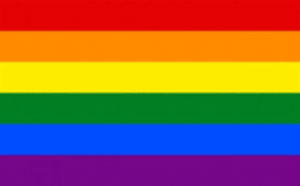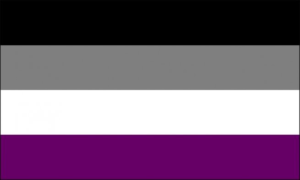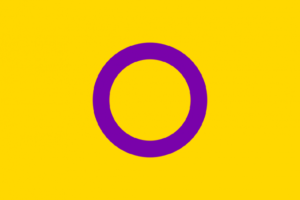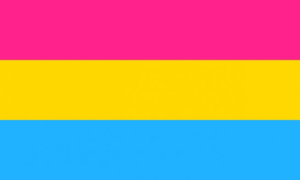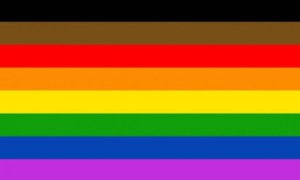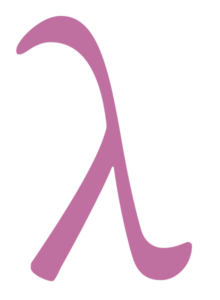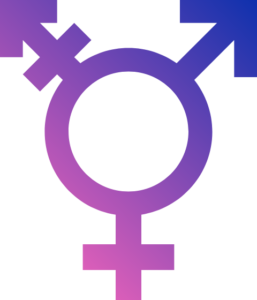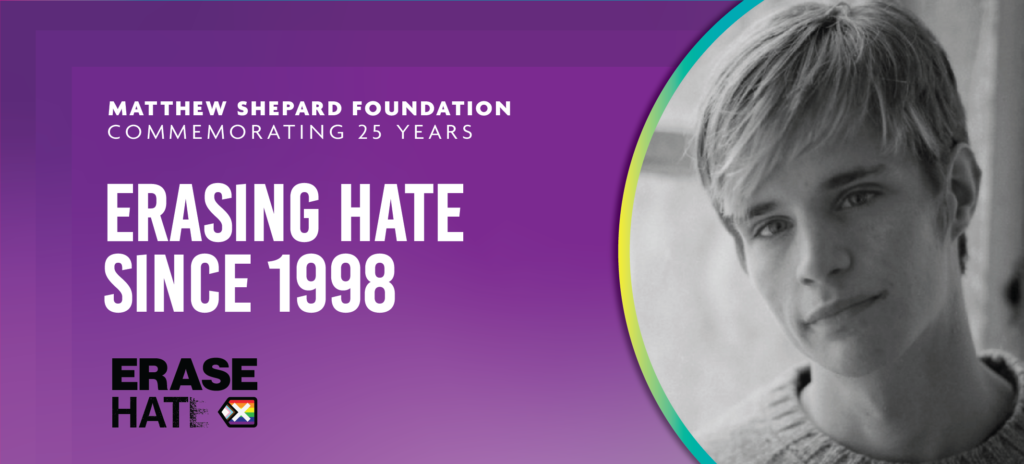LGBTQ+ Terms
The following is a list of LGBTQ+ inclusive terms.
A
Agender
A person who identifies as having no gender.
Ally
A non-LGBTQ person wo shows support for LGBTQ people and advocates for equality in a variety of ways.
Androgyne/androgynous
Identifying and/or presenting as neither distinguishably masculine nor feminine.
Asexual
A person who experiences little or no sexual attraction to others. Asexuality is not the same as celibacy.
Assigned Sex at Birth
The sex (male or female) assigned to a child at birth, most often based on the child’s external anatomy. Commonly referred to as birth sex, natal sex, biological sex, or sex.
B
Biphobia
The fear or hatred of and discrimination against bisexuals. Biphobia is different from homophobia or transphobia in that is seen within the LGBT community as well as in general society.
Bisexual
A person emotionally, romantically or sexually attracted to more than one sex, gender or gender identity though not necessarily simultaneously, in the same way or to the same degree.
C
Cisgender (cis)
A person whose gender identity aligns with those typically associated with the sex assigned to them at birth.
Coming Out
The process by which one accepts and/or comes to identify one’s own sexual orientation or gender identity (to come out to oneself). Also the process by which one shares one’s sexual orientation or gender identity with others (to come out to friends, family, etc.)
Cross-dresser
While anyone may wear clothes associated with a different gender, the term cross-dresser is typically used to refer to men who occasionally wear clothes, makeup, and accessories culturally associated with women. Those men typically identify as heterosexual. This activity is a form of gender expression and not done for entertainment purposes. Cross-Dressers do not wish to permanently change their sex or live full-time as women.
D
Deadnaming
The act of referring to a transgender or non-binary person by a name they used prior to transitioning, such as their birth name. Deadnaming can be accidental, or an intentional attempt to deny, mock, or invalidate a person’s gender identity.
Drag King
A person (often a woman) who appears as a man. Generally, in reference to an act or performance. This has no implications regarding gender identity.
Drag Queen
A person (often a man) who appears as a woman. Generally, in reference to an act or performance. This has no implications regarding gender identity.
G
Gay
A person who is emotionally, romantically or sexually attracted to members of the same gender. It can be used regardless of gender identity, but is more commonly used to describe men.
Gender
A social construct used to classify a person as a man, woman, or some other identity. Fundamentally different from the sex one is assigned at birth.
Gender-Affirming Care
Medical care that affirms or recognizes the gender identity of the person receiving medical care. Also known as “gender-affirmative” or “gender-confirming” care.
Gender Euphoria
Refers to the satisfaction and happiness people feel when their gender is affirmed. A trans person may experience this kind of euphoria when their correct names and pronouns are recognized or when their physical appearance aligns with their gender identity.
Gender Expression
External appearance of one’s gender identity, usually expressed through behavior, clothing, haircut or voice, and which may or may not conform to socially defined behaviors and characteristics typically associated with being either masculine or feminine.
Gender Fluid
A person whose gender identity is not fixed. A person who is gender fluid may always feel like a mix of genders, but may feel more one gender some days, and another gender other days.
Gender Identity
A person’s internal sense of being a man/male, woman/female, both, neither, or another gender.
Gender Non-Conforming
A gender expression that differs from a given society’s norms for males and females.
Gender Role
Societal norms dictating what types of behaviors are generally considered acceptable, appropriate or desirable for a person based on their actual or perceived sex.
H
Heteronormativity
The assumption, in individuals and/or institutions, that everyone is heterosexual, and that heterosexuality is superior to all other sexual orientations.
Heterosexism
The assumption that all people are or should be heterosexual. Heterosexism excludes the needs, concerns, and life experiences of lesbian, gay, bisexual and queer people while it gives advantages to heterosexual people. It is often a subtle form of oppression, which reinforces realities of silence and erasure.
Heterosexual (straight)
Sexual orientation describing women who are emotionally or sexually attracted to men, and men who are emotionally or sexually attracted to women.
Homophobia
The fear of, discrimination against, or hatred of lesbian or gay people or those who are perceived as such.
I
Intersex
An umbrella term used for a variety of conditions in which a person is born with a reproductive or sexual anatomy that doesn’t seem to fit the typical definitions of female or male. In some cases, these traits are visible at birth, and in others, they are not apparent until puberty. Some chromosomal variations of this type may not be physically apparent at all.
L
Lesbian
A sexual orientation that describes a woman who is emotionally and sexually attracted to other women.
LGBT
An acronym for lesbian, gay, bisexual, transgender and queer. Sometimes, when the Q is seen at the end of LGBT, it can also mean questioning. LGBT and/or GLBT are also often used. The term “gay community” should be avoided, as it does not accurately reflect the diversity of the community. Rather, LGBTQ community is preferred.
M
Misgender
The act in which someone addresses or refers to another person by the wrong gender – either accidentally or intentionally. This can include referring to someone by the wrong pronouns or using a trans person’s deadname (see deadnaming).
N
Non-binary and/or Genderqueer
Describes a person whose gender identity falls outside the traditional gender binary. Other terms for people whose gender identity falls outside the traditional gender binary include gender variant, gender expansive, etc. Sometimes written as two words (gender queer).
O
Outing
Involuntary or unwanted disclosure of another person’s sexual orientation or gender identity.
P
Pansexual
A person who has the potential for emotional, romantic or sexual attraction to people of any gender though not necessarily simultaneously, in the same way or to the same degree.
Pronouns
Linguistic tools used to refer to someone in the third person. Examples are they/them/theirs, ze/hir/hirs, she/her/hers, he/him/his. In English and some other languages, pronouns have been tied to gender and are a common site of misgendering (attributing a gender to someone that is incorrect.)
Q
Queer
An umbrella term used to describe people who think of their sexual orientation or gender identity as outside of societal norms. Some people view the term queer as more fluid and inclusive than traditional categories for sexual orientation and gender identity. Due to its history as a derogatory term, the term queer is not embraced or used by all members of the LGBT community.
Questioning
Used to describe people who are in the process of exploring their sexual orientation or gender identity.
S
Same Gender Loving
Used as an alternative to the terms gay and lesbian. SGL is more commonly but not exclusively used by members of the African American community.
Sexual Orientation
A person’s enduring physical, romantic, and/or emotional attraction to another person. Gender identity and sexual orientation are not the same. Transgender people may be straight, lesbian, gay, bisexual, or queer. For example, a person who transitions from male to female and is attracted solely to men would typically identify as a straight woman.
SOGIESC
Acronym for sexual orientation, gender identity and gender expression, and sex characteristics, more commonly used in countries outside the United States. Inclusive of all sexual orientations, gender identities, gender expressions, and sex characteristics, including intersex. Some also use SOGI (sexual orientation, gender identity) or SOGIE (sexual orientation, gender identity and gender expression). The acronym refers to all humans with sexual orientations and gender identities, including cisgender and heterosexual people.
T
Trans
Used as shorthand to mean transgender or transsexual – or sometimes to be inclusive of a wide variety of identities under the transgender umbrella.
Trans Man (FTM/F2M)
A transgender person whose gender identity is male may use these terms to describe themselves. Some will just use the term man. A person may choose to identify this way to capture their gender identity as well as their lived experience as a transgender person. Some trans men may also use the term FTM or F2M to describe their identity.
Trans Woman (MTF/M2F)
A transgender person whose gender identity is female may use these terms to describe themselves. Some will just use the term woman. A person may choose to identify this way to capture their gender identity as well as their lived experience as a transgender person. Some trans women may also use MTF or M2F to describe their identity.
Transgender
A person whose gender identity and assigned sex at birth do not correspond. Also used as an umbrella term to include gender identities outside of male and female. Sometimes abbreviated as trans.
Transition
For transgender people, this refers to the process of coming to recognize, accept, and express one’s gender identity. Most often, this refers to the period when a person makes social, legal, and/or medical changes, such as changing their clothing, name, sex designation, and using medical interventions. Sometimes referred to as gender affirmation process. Avoid the phrase “sex change”.
Transphobia
The fear of, discrimination against, or hatred of transgender or gender non-conforming people or those who are perceived as such.
Transsexual
An older term that originated in the medical and psychological communities. Still preferred by some people who have permanently changed (or seek to change) their bodies through medical interventions, including but not limited to hormones and/or surgeries. Unlike transgender, transsexual is not an umbrella term. Many transgender people do not identify as transsexual and prefer the word transgender. It is best to ask which term a person prefers. If preferred, use as an adjective: transsexual woman or transsexual man.
Two-Spirit
An umbrella term used in North America by Indigenous/Native American people to describe variations in sexual orientation and gender identity. In some tribes, Two Spirit people are believed to contain both male and female spirits and have specific spiritual roles. While there are overlaps, the term is not interchangeable with “LGBTQ”.
Symbols
The following is a list of LGBTQ+ related symbols.
LGBT Pride Flag
The LGBT pride flag was created in 1978 by San Francisco artist Gilbert Baker. Originally the flag included eight stripes, but colors have been removed due to fabric availability creating the current and most recognized form. Each of the six colors has a meaning; red means life, orange means healing, yellow means sunshine, green means nature, blue means harmony, and purple means spirit.
Bisexual Pride Flag
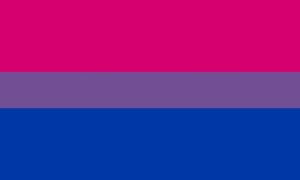
Designed in 1998 by Michael Page with the aim of increasing bisexual visibility within society as a whole and the LGBT community. The pink stripe represents the possibility of same gender attraction; the royal blue stripe represents the possibility of opposite gender attraction and the stripes overlap to form a deep shade of lavender or purple, which represents the possibility of attraction anywhere along the gender spectrum.
Transgender Pride Flag
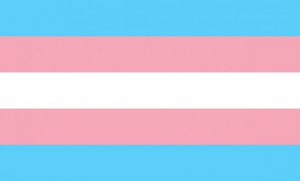
Designed by transgender woman Monica Helms and first flown at a pride parade in Phoenix, Arizona in 2000. Helms described the meaning “The light blue is the traditional color for baby boys, pink is for girls, and the white in the middle is for those who are transitioning, those who feel they have a neutral gender or no gender, and those who are intersex. The pattern is such that no matter which way you fly it, it will always be correct. This symbolizes us trying to find correctness in our own lives.”
Asexual Pride Flag
The Asexual pride flag was created in August of 2010 to help raise awareness of asexuality. Like the other pride flags each colored stripe has a different meaning; black means asexuality, grey means grey-asexuality (a grey area between asexuality and sexuality) and demisexuality, white means sexuality, and purple means community.
Intersex Pride Flag
Pansexual Pride Flag
No single creator is known for the pansexual pride flag but it began surfacing on the internet in 2010. The pink and blue stripes on either side symbolizes female-gendered persons (regardless of biological sex) and male-gendered persons (again regardless of biological sex) respectively, while the gold stripe in the middle represents those who identity as a mixed gender, genderless, or as a third gender.
Philadelphia People of Color-Inclusive Flag
Lambda
Transgender Symbol
This is the most popular transgender symbol. It originates from a drawing by Holly Boswell. A modification of the traditional gender symbols, it depicts a circle with an arrow projecting from the top-right, as found in the male symbol, and a cross projecting from the bottom, as found in the female symbol, with an additional stroked arrow (combining the female cross and male arrow) projecting from the top-left.

